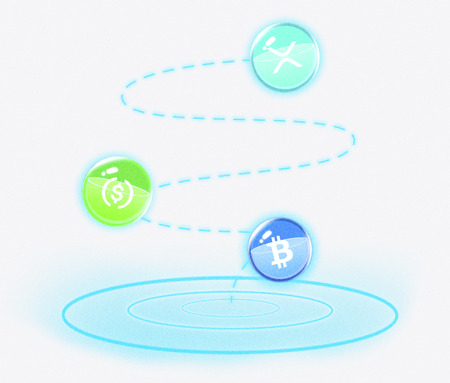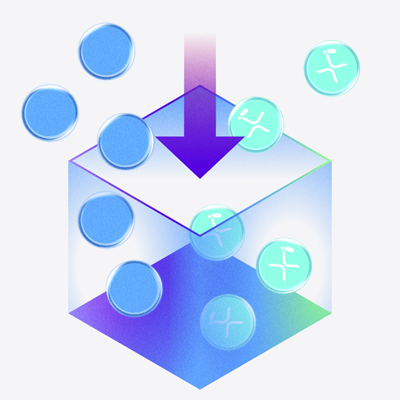Lesson 4
Introduction to Decentralized Finance (DeFi)
Making peer-to-peer trading scale

What is decentralized finance (DeFi)?

Decentralized finance (or simply DeFi) is an umbrella term for various protocols and financial instruments that are built on distributed ledger technology (DLT), such as blockchain.
DeFi protocols aim to provide an open, decentralized infrastructure for financial applications. This infrastructure is designed to be accessible to anyone with an internet connection, regardless of location, identity, or wealth.
Advantages of DeFi over Centralized Financial Systems (CeFi)
DeFi has many advantages compared to centralized financial (CeFi) systems, including:
Improved security and resilience
The decentralized infrastructure of DeFi enhances security and resilience, reducing vulnerabilities associated with centralization.
Fee Absence
DeFi eliminates fees comparable to those of traditional banks and financial institutions, making transactions more cost-effective.
Increased transparency
The decentralized nature of DeFi enhances transparency, fostering trust and accountability within the financial ecosystem.
Financial Inclusion
DeFi extends greater access to financial services, especially to unbanked individuals, creating a more inclusive financial landscape.
What’s been built in the DeFi space already?

In the short time that DeFi protocols have been around, a great deal of progress has been made. Here are some of the most popular use cases and protocols in the space:
DeFi Lending and Borrowing Protocols
Anyone can borrow or lend digital assets using decentralized lending and borrowing protocols. You can connect to lenders and borrowers directly, without having to provide funds or personal information to an intermediary.
MakerDAO is one of the most popular protocols in this space. The protocol allows users to collateralize digital assets and then borrow against them.
DeFi Liquidity Provisioning Protocols
Liquidity providers (LPs) earn fees by supplying money to decentralized exchanges (DEX’s), like automated market makers (AMMs). LPs provide this liquidity by holding an equal value of two different assets in a “liquidity pool.”
LPs are rewarded with a portion of the trading fees that are generated when users trade the assets in the liquidity pool. Pancakeswap and Uniswap are two of the most popular protocols for liquidity provisioning.

DeFi Asset Management Protocols
Asset management protocols integrate with a variety of DeFi projects to automate the task of constantly tracking investments for price movements, rebalancing, liquidations, and rate changes. Yearn.finance is a protocol that provides “smart vaults” for digital assets. These vaults automatically invest users’ funds in the highest-yielding protocols and strategies, so that users can earn the maximum possible return when yield farming (using DeFi to earn interest on digital assets).
Exploring the Potential for Growth in DeFi
One area of finance that can be improved by DeFi is the derivatives market, which is estimated to be worth over $1 quadrillion—10x the size of the global stock market.
The DeFi derivatives market has only just begun to take off, with dYdX leading the way. The Total Value Locked (TVL) in the DeFi derivative market currently sits at just over $3 billion. While this may not sound like a lot, this is a growth of roughly 200% in just a few years.
With the launch of new protocols and platforms, we can only expect this growth to continue. It’s not hard to imagine that the DeFi derivatives market could one day be worth trillions of dollars.
